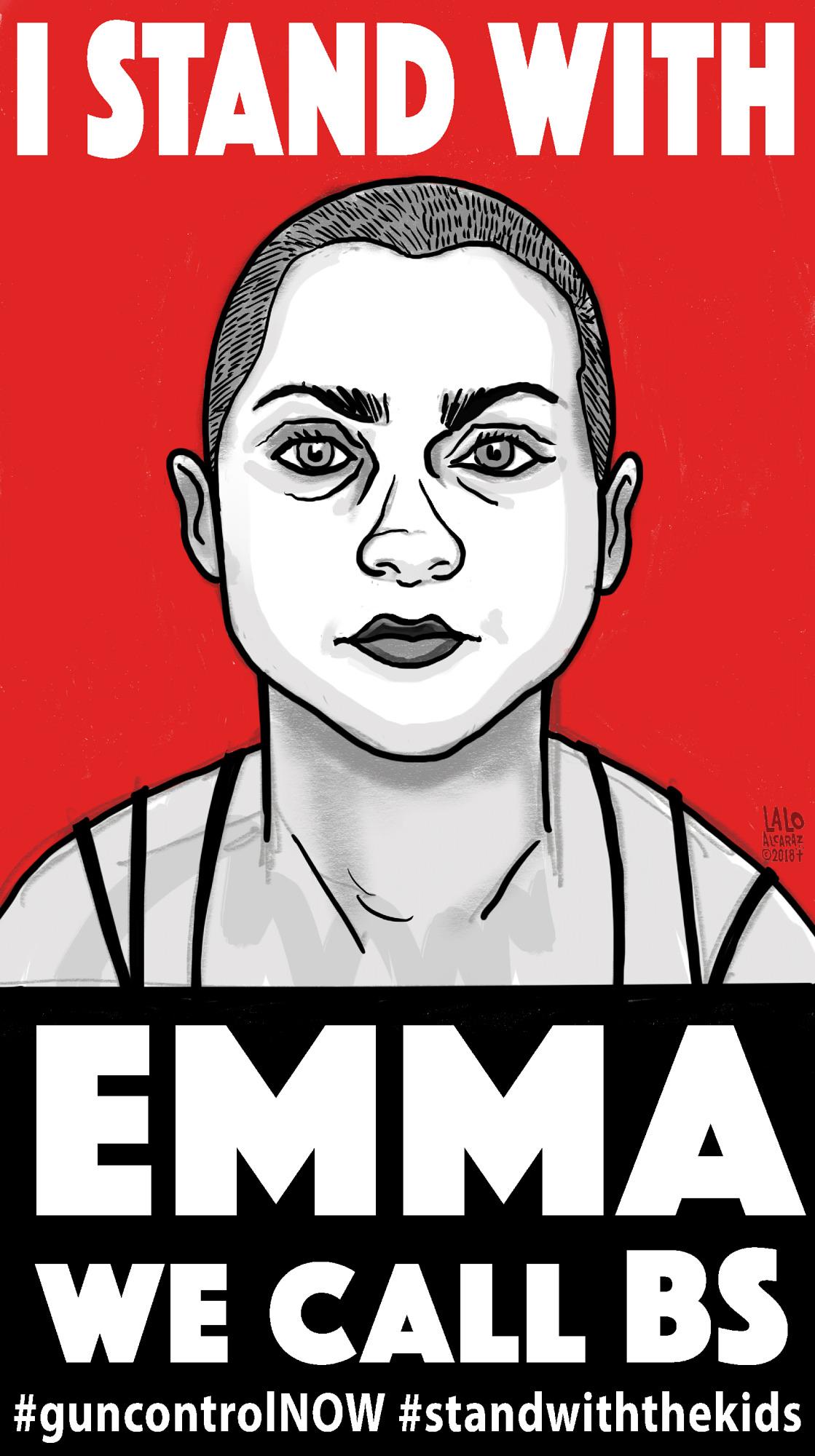
In February 2018, high school senior Emma González survived the shooting at Marjory Stoneman Douglas High School in Parkland, Florida. Days later, she gave an impassioned speech on live television, advocating for stronger gun control. Moved by her strength and leadership, artist Lalo Alcaraz created a portrait of González after watching.. The image, illustrated with digital tools, features “We Call B.S.,” a line from González’s speech. Along the bottom of the image, Alcaraz added social media–centered tags #guncontrolNOW and #standwiththekids that were trending among social media users wishing to display their solidarity for gun reform. He posted the image on his social media channels, using the caption to ask people to distribute the work online or download a high-resolution file from his website for personal printing. Many did, and the image became a popular protest poster at rallies following the shooting.
Alcaraz’s poster of Emma González echoes a long tradition of activist posters dating back to political rebellions of the 1960s. Chicano graphic artists, drawing from their many stylistic influences, designed bold, vivid illustrations in rich colors in an effort to reach the largest number of viewers—blending the context with the form, the artistic with the political. In the 1980s, many Chicanx artists began creating work digitally. Today’s artists have integrated their work across multiple platforms in the digital realm, creating a continuous and multi-layered narrative that reaches many audiences. These digital-first works exist on the artists’ websites, blogs, social media channels, and often in print form. By posting the artwork to social media, Alcaraz created a critical intersection for direct engagement with his followers, with the caption acting as a direct conversation with the audience. Claudia Zapata, curatorial assistant for Latinx art at SAAM, explains in their essay “Chicanx Graphics in the Digital Age” from the catalogue for ¡Printing the Revolution! The Rise and Impact of Chicano Graphics, 1965 to Now, that contemporary artists such as Alcaraz “share many of the same objectives of printmakers of the early Chicano movement: to disseminate their images and comment on contemporary issues, support social movements, and analyze and reform their cultural identities.”
Find out how Alcaraz honors a new generation of activists "guiding us towards to a better tomorrow" from Claudia Zapata in a new video series, "American Art Moments." In this series, SAAM experts go beyond the artwork label to share the untold stories and rich connections represented in remarkable artworks from the museum's collection.
SAAM’s landmark exhibition, ¡Printing the Revolution! The Rise and Impact of Chicano Graphics, 1965 to Now, explores how Chicanx artists have linked innovative printmaking practices with social justice. This blog post is part of series that takes a closer look at selected artworks with material drawn from exhibition texts and the catalogue.



















